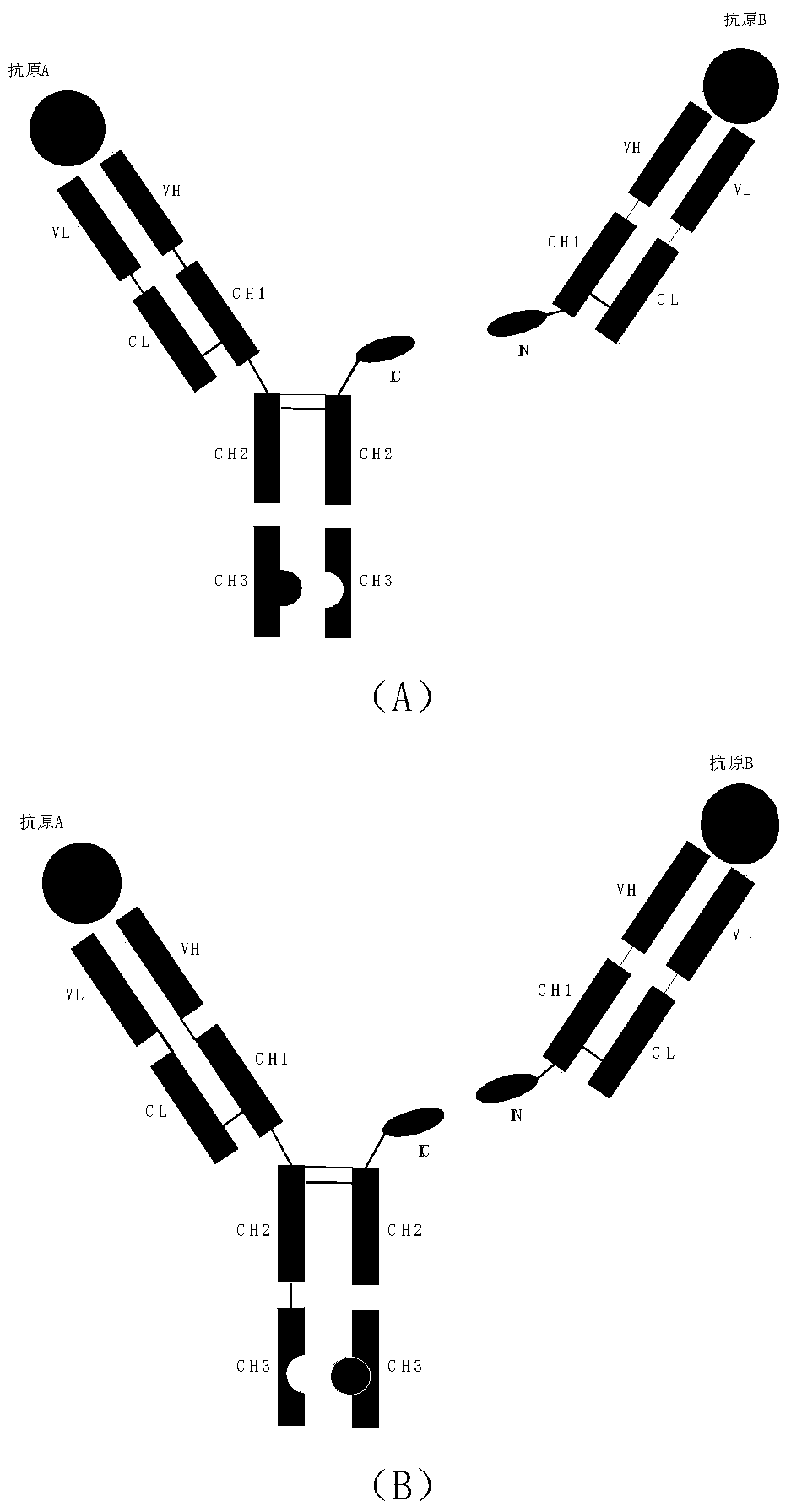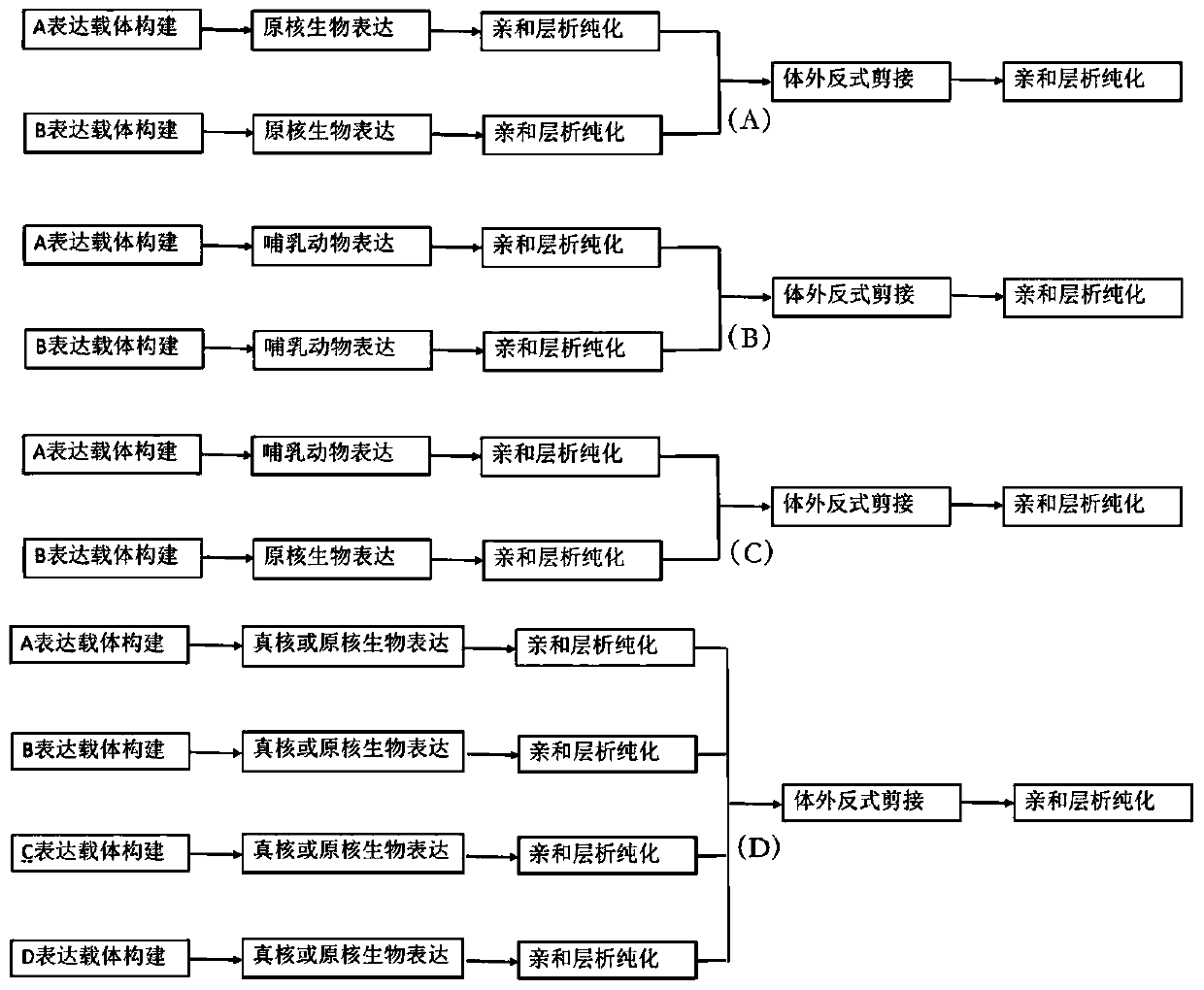Expression and preparation method of multivalent multispecific antibody and immune hybrid protein
A multi-specific antibody and specific technology, which is applied in the field of expression and preparation of multivalent multi-specific antibodies and immune hybrid proteins, can solve the problem of affecting the half-life of ADCC effect, the inability to obtain the yield of immunotoxin, and the inability to solve the mismatch phenomenon, etc. question
- Summary
- Abstract
- Description
- Claims
- Application Information
AI Technical Summary
Problems solved by technology
Method used
Image
Examples
preparation example Construction
[0114] The expression and preparation method of the novel bivalent bispecific antibody hybrid protein involved in the present invention comprises the following steps:
[0115] 1. Expression vector construction.
[0116] For the construction of expression vectors, general information on the nucleotide sequences of human immunoglobulin light and heavy chains is found in Kabat, E.A., et al., Sequences of Proteins of Immunological Interest, 5th edition, Public Health Service , National Institutes of Health (Public Health Service, National Institutes of Health), Bethesda, MD. (1991)) and drugbank databases. Amino acids of antibody chains are numbered and referred to according to EU numbering (Edelman, G.M., et al., Proc. , Sequences of Proteins of Immunological Interest, 5th Edition, Public Health Service, National Institutes of Health, Bethesda, MD. (1991)). Desired gene segments are prepared from oligonucleotides prepared by chemical synthesis. 600-1800bp long gene segments we...
Embodiment 1
[0135] Example 1. Construction of CD3×Her2 bispecific antibody
[0136] 1.1. Expression vector construction
[0137] For the construction of expression vectors, general information on the nucleotide sequences of human immunoglobulin light and heavy chains is found in Kabat, E.A., et al., Sequences of Proteins of Immunological Interest, 5th edition, Public Health Service , National Institutes of Health (Public Health Service, National Institutes of Health), Bethesda, MD. (1991)) and drugbank databases. Amino acids of antibody chains are numbered and referred to according to EU numbering (Edelman, G.M., et al., Proc. , Sequences of Proteins of Immunological Interest, 5th Edition, Public Health Service, National Institutes of Health, Bethesda, MD. (1991)). The CD3 antibody sequence is derived from the humanized OKT3 drug sequence, and the desired gene segment is prepared by oligonucleotides prepared by chemical synthesis. 600-1800bp long gene segments were assembled by annea...
Embodiment 2
[0166] Example 2. Using the trans-splicing function of Npu DnaE to prepare the immunotoxin Herceptin-PE38KDEL
[0167] 2.1. Construction of the Her HC expression vector pCEP4-Her HC-Nn fused with the N-terminus of the split intein Npu DnaE
[0168] Using the primers in Table 1, use the synthesized Herceptin heavy chain nucleic acid molecule containing the gene encoding the signal peptide as a template and use the primers in the table to clone the gene encoding the Herceptin heavy chain Using the synthetic nucleic acid molecule containing Npu DnaE as a template, clone the N-terminal of Npu DnaE The gene was amplified by TaKaRa’s PrimerStar Max, and the PCR conditions were 94°C for 10s, 55°C for 10s, 72°C for 10s, and 30 cycles. The obtained fragments were recovered by agarose gel electrophoresis and overlapped PCR was used to encode the heavy chain of Herceptin. The gene and the N-terminal gene Npu DnaE encoding Npu DnaE were synthesized in sequence at the C-terminus of the f...
PUM
 Login to View More
Login to View More Abstract
Description
Claims
Application Information
 Login to View More
Login to View More - R&D
- Intellectual Property
- Life Sciences
- Materials
- Tech Scout
- Unparalleled Data Quality
- Higher Quality Content
- 60% Fewer Hallucinations
Browse by: Latest US Patents, China's latest patents, Technical Efficacy Thesaurus, Application Domain, Technology Topic, Popular Technical Reports.
© 2025 PatSnap. All rights reserved.Legal|Privacy policy|Modern Slavery Act Transparency Statement|Sitemap|About US| Contact US: help@patsnap.com



